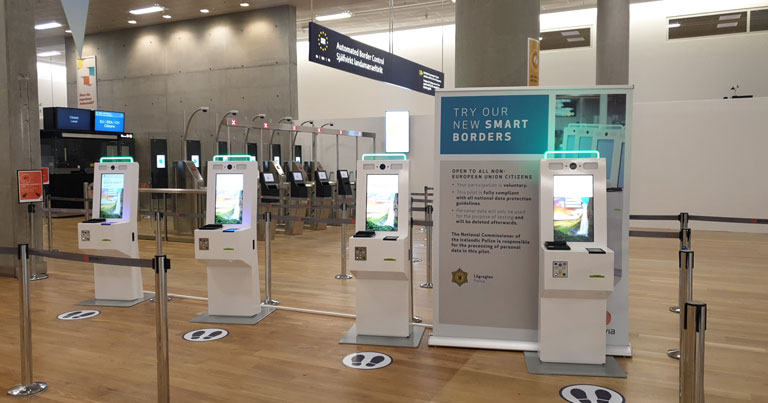
Vancouver International Airport’s Innovative Travel Solutions (ITS) has recently completed a six-month pilot programme involving BorderXpress self-service biometric-enabled kiosks at Keflavik International Airport (KEF).
The kiosks were part of a pilot to simulate the requirements of the Entry/Exit System (EES) for the Schengen Area. ITS says that during the pilot programme, which began in June 2019, the kiosks safely processed more than 9,500 passengers in accordance with the new security and data collection requirements outlined by the European Union. Almost 20% of travellers were families and couples who were able to proceed together to a single kiosk before completing the rest of the border process at the primary inspection booth.
Craig Richmond, President and CEO, Vancouver International Airport Authority, said: “We commend Isavia for taking a proactive approach to future-proofing KEF, as they prepare to fulfil the new Entry-Exit regulations. We also recognise that the strong partnership formed between Isavia, the Icelandic Police and Innovative Travel Solutions was a critical component to a successful integration process. We have the proven experience to deliver an effective Entry-Exit solution and the Iceland pilot is further proof of the importance of innovating now to find a smart solution to border control.”
Isavia operates all airports in Iceland, including Keflavik, which is the largest border crossing point in the country. As part of the pilot programme, BorderXpress kiosks were available for Third Country Nationals (TCN) and EU/EEA/CH citizens to use when entering Iceland. Among the key findings, Isavia reported that TCN travellers entering the Schengen Area for the first time took an average of 64 seconds to process and travellers making subsequent visits were processed in only 42 seconds. These times do not include the additional and optional declaration questions from the workflow, and all processing times are dependent on the number and complexity of questions asked by individual border authorities. The pilot at KEF has provided an important opportunity to better understand the border authority technical requirements, as well as traveller behaviour, which then helps determine the right questions to ask to minimise overall transaction time.
According to ITS, developing and implementing a border control process that was optimal for KEF required ongoing collaboration. ITS said that it was able to draw on its experience as an airport operator to form best practices with Isavia, and the support of the Icelandic Police allowed the kiosk technology to be customised to meet their specific requirements. This collaborative approach allowed ITS to design a solution that was effective for all parties in only 12 weeks – resulting in an efficient and seamless integration process.
“The pilot programme was an excellent opportunity to introduce automated, self-service border control technology, trial a range of workflows and gather key information to prepare us for the impending regulations,” says Gudmundur Dadi Runarsson, Technical and Infrastructure Director at Keflavik Airport. “We’re able to use these insights to modernise our border control system, while also improving the overall passenger experience and safety of our airport.”






